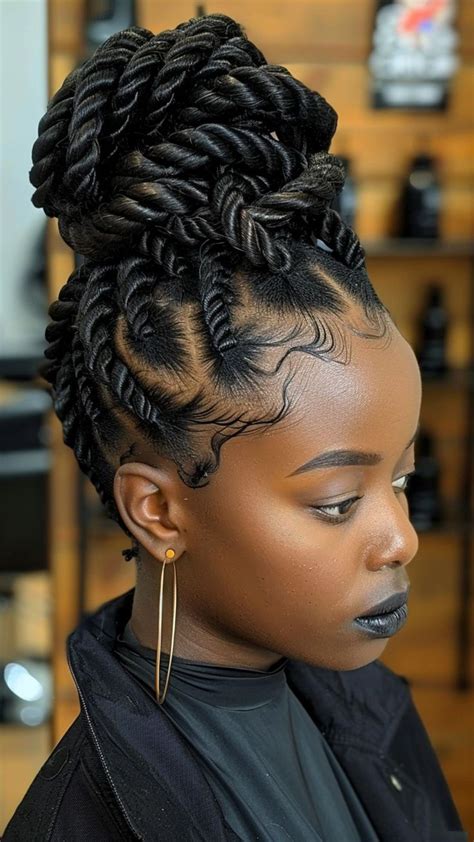Introduction
Braiding, an intricate art of interweaving strands of hair, has been an integral part of human culture for millennia. With its versatility and adaptability, braids transcend geographical boundaries and societal norms, adorning heads of people from diverse backgrounds. This article explores the rich history, cultural significance, and myriad variations of 30 braids, unearthing the motivations behind their enduring popularity.

Historical Context and Cultural Significance
The earliest evidence of braiding dates back to prehistoric times, with archaeological findings suggesting its prevalence among ancient Egyptians, Greeks, and Native American tribes. In ancient Egypt, braids were symbols of social status and religious devotion. Cleopatra herself was renowned for her elaborate, gilded hairstyles that incorporated intricate braids.
Throughout history, braids have held cultural and symbolic meanings. For the Zulu people of South Africa, braids represent strength, unity, and ancestor veneration. In the Caribbean, cornrows were traditionally worn by enslaved Africans as a form of resistance and cultural expression. Today, braids continue to evoke a sense of identity, empowerment, and cultural heritage.
Motivations for Braiding
The motivations for braiding are as diverse as the hairstyles themselves. Some individuals opt for braids for practical reasons, such as protecting natural hair from damage or managing unruly locks. Others seek aesthetic appeal, adorning their hair with braids for a trendy, stylish look. Beyond these motivations, braids also hold emotional and spiritual significance, serving as a connection to cultural heritage or as a symbol of personal growth and transformation.
Pain Points and Motivations
Understanding the pain points and motivations of customers who braid their hair is crucial for developing effective products and services. Common pain points include:
- Time-consuming: Braiding can be a lengthy process, requiring skilled hands and ample time.
- Cost: Professional braiding services can be expensive, especially for intricate or elaborate hairstyles.
- Hair damage: Improper braiding techniques can damage hair, causing breakage or thinning.
Motivations for braiding include:
- Cultural identity: Braids are deeply rooted in many cultures, providing a sense of belonging and connection to heritage.
- Personal expression: Braids offer a creative outlet for self-expression, allowing individuals to showcase their unique style.
- Hair health: Braiding can protect natural hair from harsh environmental factors and reduce breakage.
Effective Strategies
To address the pain points and motivations of braiders, businesses can implement effective strategies:
Innovative Tools: Develop time-saving braiding tools or techniques to shorten the braiding process.
Affordable Services: Offer tiered pricing options or training programs to make professional braiding services more accessible.
Hair Care Products: Create hair care products specifically designed for braided hair, promoting scalp health and preventing damage.
Types of 30 Braids
The world of 30 braids is vast and ever-evolving, with countless variations. Here are some of the most popular and iconic styles:
Box Braids: Rectangular-shaped braids that create a bold, geometric look.
Cornrows: Intricate rows of raised braids that start from the front and extend to the back of the head.
Ghana Braids: Tightly woven braids that lie flat against the scalp, forming intricate patterns.
French Braids: Three-strand braids that begin at the crown and gradually incorporate additional hair.
Future Trends and Innovations
The future of braiding is bright, with emerging technologies and creative minds pushing the boundaries of this ancient craft. Some potential trends and innovations include:
Virtual Hairstyles: Augmented reality and virtual reality tools that allow users to experiment with different braids in real-time.
Smart Braiding Devices: AI-powered devices that assist with braiding, increasing speed and precision.
Sustainable Braiding: Eco-friendly braiding materials and techniques that minimize environmental impact.
Beyond Hair: Applications in Other Industries
The concept of braiding extends beyond hair, inspiring innovative applications in various industries:
Architecture: Interlocking panels or beams that resemble braids, creating structurally sound and aesthetically pleasing buildings.
Textiles: Braided fabrics and textiles for clothing, accessories, and home décor, offering unique patterns and textures.
Product Design: Products with braided elements, such as furniture, jewelry, and electronics, adding an organic touch and visual interest.
Conclusion
30 braids are a vibrant tapestry of hairstyles that reflect the diversity of human cultures. From their historical roots to their contemporary significance, braids serve practical, aesthetic, and emotional purposes. Understanding the pain points and motivations of braiders enables businesses to create innovative solutions that meet their needs. As technology and creativity continue to shape the future of braiding, we can expect even more groundbreaking applications and styles that continue to inspire and adorn.
